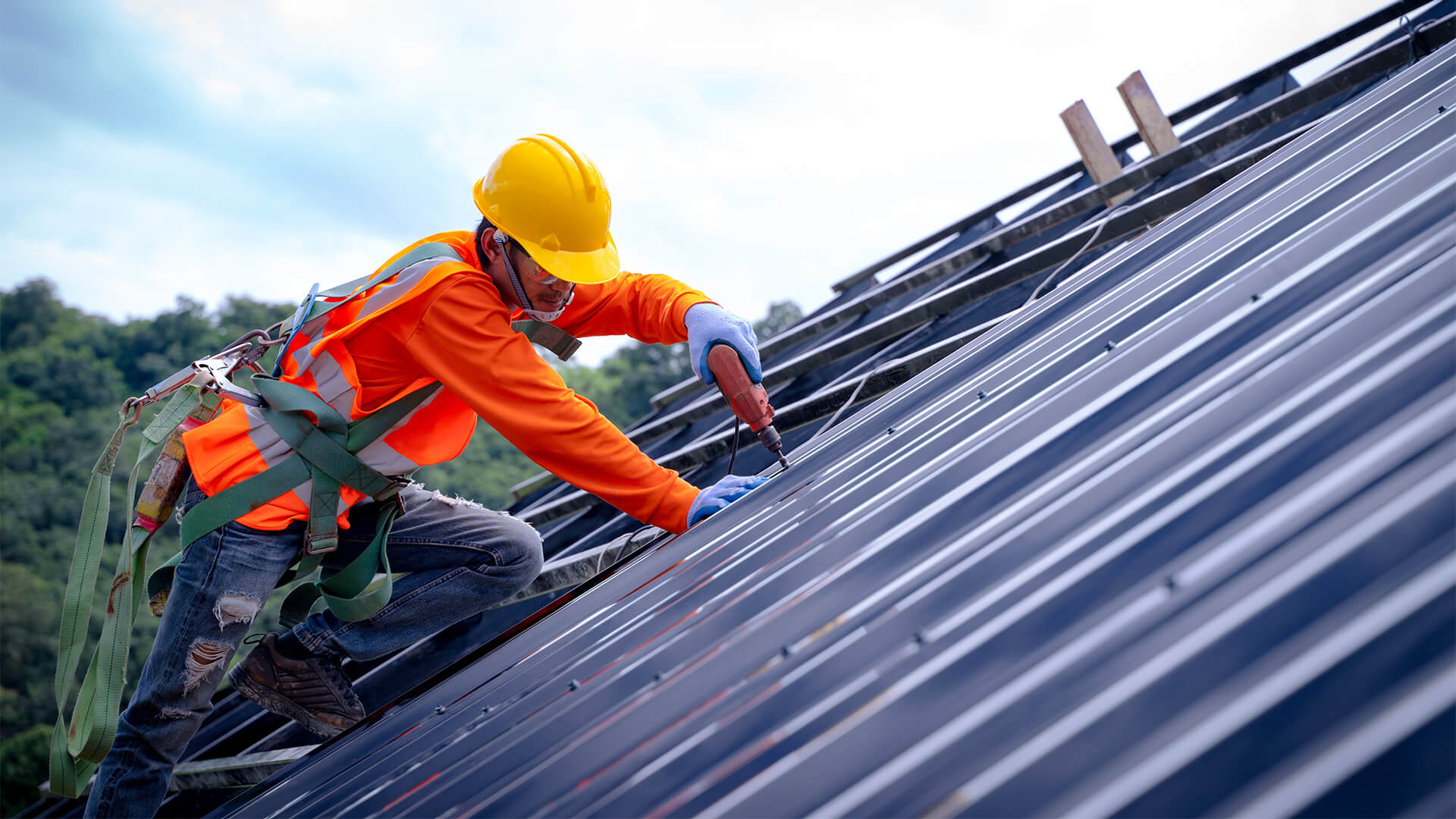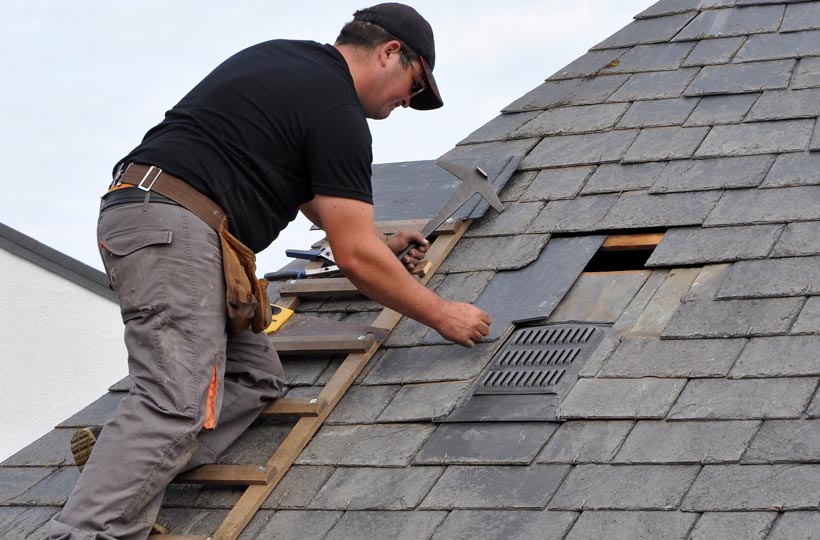Roofing Companies Oahu: Relied On Experts for Your Roofing Demands
Roofing Companies Oahu: Relied On Experts for Your Roofing Demands
Blog Article
Understanding the Various Kinds Of Roofs: A Comprehensive Guide for Homeowners
In the world of homeownership, choosing the ideal roof covering design is a decision that brings significant ramifications for both functionality and aesthetic charm. With a variety of choices-- ranging from the traditional gable to the modern flat-- each type offers one-of-a-kind benefits and obstacles that ought to line up with the property owner's environmental factors to consider and particular requirements. Understanding these differences not just aids in making an informed selection but also affects long-lasting upkeep and power efficiency. As we check out the ins and outs of different roof types, it becomes evident that one dimension does not fit all; the right option might surprise you.
Saddleback Roof
Gable roofing systems, identified by their triangular form, are among one of the most popular roof styles as a result of their simplicity and performance in dropping water and snow. This style features 2 sloping sides that fulfill at a ridge, enabling for efficient water drainage and reducing the risk of water accumulation. The high pitch typically connected with saddleback roofs improves their capability to take care of heavy precipitation, making them appropriate for different climates.
Along with their sensible advantages, saddleback roofs supply visual versatility. They can be adapted to various architectural styles, from conventional to contemporary homes. The style can likewise fit added attributes such as dormer windows, which improve all-natural light and ventilation in the attic room.
In addition, gable roofs give sufficient area for insulation, adding to energy performance. Homeowners can select from a range of roof covering materials, including asphalt shingles, steel, and floor tiles, further improving personalization alternatives.
In spite of their benefits, gable roof coverings might call for extra support in locations vulnerable to high winds or heavy snowfall. Generally, the saddleback roof stays a preferred option as a result of its mix of capability, durability, and aesthetic charm.
Flat Roofs
Level roofs are usually recognized for their minimal design and sensible applications, particularly in business and commercial settings (oahu roofing). These roofs feature a nearly horizontal or straight surface area, which permits for very easy building and flexible space use. While they may do not have the aesthetic charm of angled roofs, flat roofing systems supply countless advantages, specifically in metropolitan atmospheres where making the most of area is important
One of the primary benefits of flat roofs is their ease of access. Property owners can use the roof covering space for various purposes, such as rooftop yards, terraces, or photovoltaic panel setups. Additionally, flat roof coverings are usually extra cost-effective to set up and preserve contrasted to their sloped equivalents, as they call for less materials and labor.
Typical products used for flat roofings consist of built-up roofing (BUR), changed bitumen, and single-ply membranes, each offering distinct advantages. On the whole, level roofings offer as a versatile and functional choice for many property owners and organizations alike.
Hip Roof Coverings
Hip roof coverings are identified by their sloped sides that merge on top, developing a ridge. This layout is distinctive from saddleback roofs, as all 4 sides of a hip roof covering incline check my blog downwards towards the wall surfaces, offering a more stable structure. The angle of the inclines can differ, find more info allowing for flexibility in building aesthetic appeals and performance.
Among the main advantages of hip roofs is their capability to endure heavy winds and negative weather. The sloped surfaces allow far better water drainage, lowering the threat of leaks and water damages. Additionally, hip roofing systems use boosted attic room room, which can be made use of for storage space and even transformed into livable areas.
Nevertheless, creating a hip roofing can be more pricey and complicated than less complex roofing kinds, such as gable roofing systems. The added product and labor involved in creating the slopes and making certain appropriate structural integrity can cause higher expenditures. Regardless of these downsides, many property owners prefer hip roof coverings for their toughness, visual allure, and possibility for energy effectiveness.
Mansard Roofs
Mansard roofing systems, usually identified by their special four-sided design, function two inclines on each side, with the reduced incline being steeper than the top. This architectural style, originating from France in the 17th century, is not only cosmetically enticing however functional, as it optimizes the functional room in the top floors of a structure. The high reduced slope permits even more clearance, making it a suitable choice for lofts or attics, which can be converted right into living areas.
Mansard roofs are characterized by their flexibility, fitting various architectural styles, from typical to contemporary. They can be built with various products, including asphalt tiles, slate, or metal, giving property owners with a series of alternatives to suit their choices and budgets. In addition, the style enables the combination of dormer home windows, enhancing natural light and ventilation in the upper levels.
Nonetheless, it is necessary to take into consideration the possible downsides. Mansard roofs might need even more upkeep due to the intricacy of their design, and their steep inclines can be testing for snow and rain runoff. On the whole, mansard roofs incorporate beauty with usefulness, making them a preferred selection amongst homeowners seeking distinctive building attributes.
Dropped Roofs
As home owners progressively look for simplicity and performance in their architectural layouts, shed roofs have actually arised as a preferred choice. Defined by a solitary sloping aircraft, a shed roofing system provides a minimal visual that matches various home designs, from modern to rustic.
One of the primary advantages of a shed roof is its uncomplicated construction, which often converts to lower labor and material prices. This design enables efficient water drain, decreasing the threat of Extra resources leakages and water damages. In addition, the upright slope supplies adequate room for skylights, improving natural light within the interior.
Lost roofings additionally supply convenience in terms of usage. They can be effectively integrated right into enhancements, garages, or outside structures like sheds and pavilions. Additionally, this roof covering style can accommodate various roof covering products, consisting of steel, asphalt roof shingles, or even eco-friendly roofings, aligning with green campaigns.
Nonetheless, it is necessary to think about local climate problems, as hefty snow loads may demand changes to the roof covering's angle or structure. Overall, lost roofs present a functional and visually pleasing option for home owners wanting to make the most of performance without compromising design.
Conclusion


Gable roofings, defined by their triangular shape, are among the most prominent roofing designs due to their simplicity and effectiveness in shedding water and snow. oahu roofing. The high pitch commonly linked with gable roofings enhances their capability to take care of hefty rainfall, making them appropriate for numerous environments
While they might lack the aesthetic allure of pitched roofing systems, level roofs provide numerous benefits, especially in city settings where maximizing space is important.

Report this page